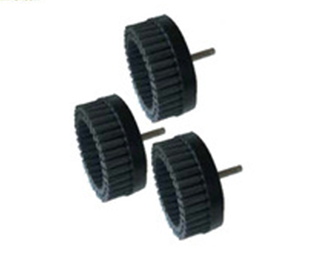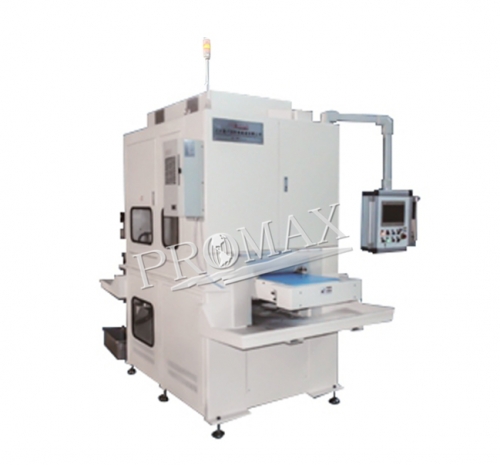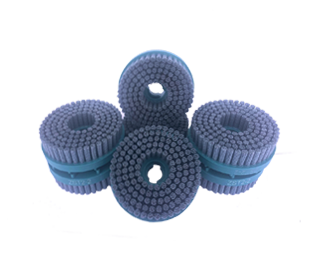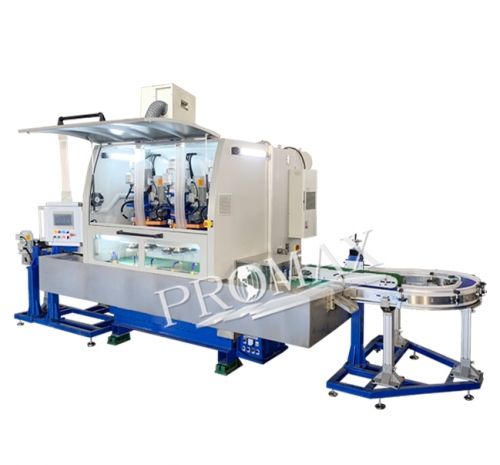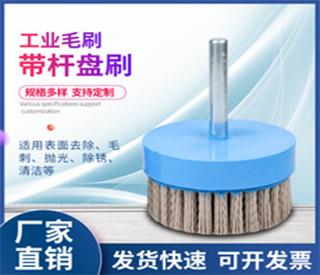Common methods of deburring
Shanghai deburring machine manufacturers introduce common methods of deburring.
Although the burr is not big, it directly affects the quality of the product. Therefore, with the emphasis on burr removal in various industries, methods of deburring are also emerging in endlessly. There are mainly the following types of commonly used trimming/deburring:
manual
Traditional; and the trimming knife gradually replaced these traditional methods, without technical processing, cost saving and environmental protection.
Chemical
Using the principle of electrochemical reaction, the deburring operation of parts made of metal materials is automatically and selectively completed. It can be widely used in the deburring of pump bodies, valve bodies, connecting rods, plunger needle valve parts and other parts of different metal materials in pneumatic, hydraulic, engineering machinery, nozzle oil pumps, automobiles, engines and other industries. It is suitable for hard-to-remove internal burrs, heat-treated and finished parts.
electrolysis
An electrolytic machining method that uses electrolysis to remove burrs on metal parts, referred to as ECD in English. Fix the tool cathode (usually made of brass) near the burr part of the workpiece, with a certain gap between the two (usually 0.3 ~ 1 mm). The conductive part of the cathode of the tool is aligned with the edge of the burr, and the other surface is covered with an insulating layer, so that the electrolysis is concentrated on the burr. During processing, the tool cathode is connected to the negative pole of the DC power supply, and the workpiece is connected to the positive pole of the DC power supply. A low-pressure electrolyte with a pressure of 0.1 to 0.3 MPa (usually sodium nitrate or sodium chlorate aqueous solution) flows between the workpiece and the cathode. When the DC power supply is turned on, the burrs will be dissolved and removed by the anode, and will be taken away by the electrolyte. The electrolyte is corrosive to a certain extent, and the workpiece should be cleaned and anti-rust treated after deburring. Electrolytic deburring is suitable for removing burrs from cross holes in hidden parts or parts with complex shapes. The production efficiency is high, and the deburring time generally only takes a few seconds to tens of seconds. This method is often used for deburring gears, splines, connecting rods, valve bodies and crankshaft oil passages, as well as rounding sharp corners. The disadvantage is that the vicinity of the part burr is also subjected to electrolysis, the surface will lose its original luster, and even affect the dimensional accuracy.
Ultrasound
When the ultrasonic energy generated by the ultrasonic acts on the liquid in the sparse state of vibration, it will tear into small cavities (that is, the inside is vacuum). These cavities will generate an instantaneous pressure of up to several hundred atmospheres when they rupture. , And this phenomenon is called cavitation. Ultrasonic deburring is to use the instantaneous impact force of hundreds of atmospheres produced by the "cavitation phenomenon" to remove the burrs attached to the components. Ultrasonic deburring is not applicable to all burrs, mainly for some microscopic burrs. Generally, if the burrs need to be observed with a microscope, you can try to remove them by ultrasound. For the burrs that are visible to the naked eye, the bonding strength is mainly determined. For burrs with weak bonding strength, ultrasonic waves can be used. Generally, burrs that can only be processed with a tool cannot be processed by ultrasonic methods. Advantages and disadvantages of ultrasonic deburring.
High pressure water jet
As the name implies, it uses water as a medium, and uses its instant impact to remove burrs and flashes generated after processing, and at the same time achieve the purpose of cleaning. After many trials and tests, the suitable pressure was found to be 30MPa-50MPa. If the pressure is insufficient, the effect of deburring cannot be achieved. Although the pressure is too high, the burrs can be removed, but there is a danger of damaging the workpiece. Generally, the hydraulic parts are subjected to liquid pressure within 20Mpa during use. The burr remains that cannot be removed with a pressure of 50MPa. The probability of falling off under a working pressure of several MPa is very small, and it can also be considered as the root of the burr. The residue is part of the workpiece. There are more and more manufacturers of high-pressure water deburring equipment, which can be simply classified into two types: movable workpiece and movable nozzle. The movable workpiece has a low cost and is suitable for the deburring and cleaning of simple valve bodies. Its disadvantage is that the matching degree between the nozzle and the valve body is not ideal, and the burr removal effect of the cross holes and oblique holes inside the valve body is not good; the movable nozzle is controlled by CNC It can effectively adjust the distance between the nozzle and the burr of the valve body, and effectively correspond to the burr of the cross hole, the oblique hole and the blind hole inside the valve body. However, due to the high cost of this equipment, only the heart of the car and the hydraulic control system of the construction machinery In order to generally enjoy this favor.

